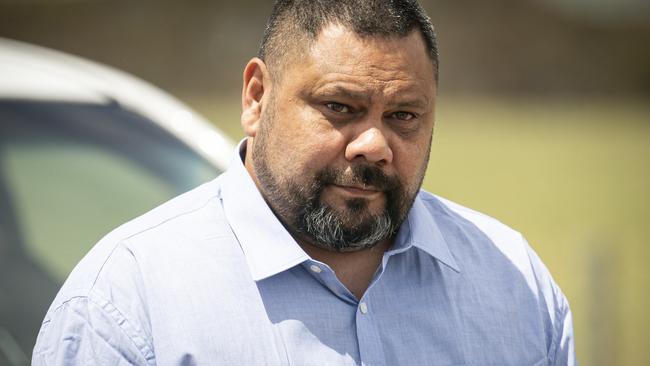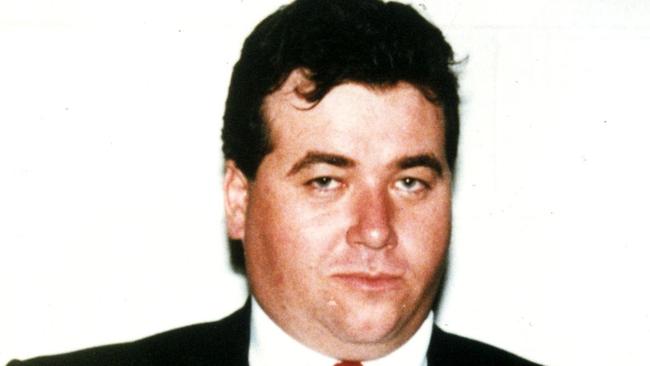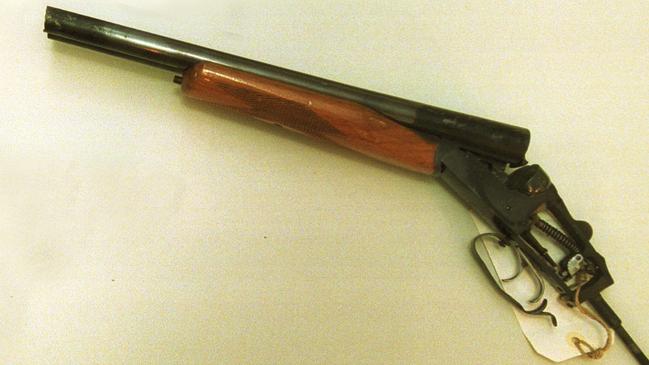Paul Beveridge Maroroa sentenced to nine years jail for 2000 manslaughter of Robert Sabeckis – but could be out in four
This killer left his victim to die, hid from justice for 20 years, was caught by DNA, lied at trial and apologised only after he was found guilty – but he could be free in just four years’ time.

Breaking news
Don't miss out on the headlines from Breaking news. Followed categories will be added to My News.
- ‘I hope this haunts you’ slain man’s niece tells cold-case killer
- How to get the most out of your Advertiser digital subscription
He fatally shot a man, left him to die, went on the run for 20 years, was caught by DNA, lied at trial and apologised only after a jury convicted him – and he could be free in four years.
On Friday, the Supreme Court jailed Paul Beveridge Maroroa for nine years but imposed a lower-than-usual non-parole period of six years, backdated to his 2018 arrest.
In sentencing, Justice Sam Doyle rejected Maroroa’s claims his victim, Robert Sabeckis, tried to rape and kidnap him – restoring the good name of a man who died in January 2000.
However, he also ruled that “whatever” Mr Sabeckis did to prompt Maroroa to shoot him three times “substantially mitigated” the crime.
He said that, together with Maroroa’s good character and lack of offending during his 20 years as a fugitive, warranted the “relatively short” prison term.
Outside court, Mr Sabeckis’ niece Vilija adopted an optimistic approach following the sentence.
“No amount of time the offender spends in prison will bring Robert back (but) we can take some comfort that this ordeal is finally over,” she said.
“Importantly, someone has been held accountable for my uncle’s unlawful killing, in such horrific circumstances.
“Today, after more than 20 years, justice has been done for Robert.”

Maroroa, 45, of Auckland in New Zealand, was arrested in 2018 when a cold case DNA hit linked him to Mr Sabeckis’ long-unsolved killing.
At trial, he admitted shooting but denied murdering Mr Sabeckis with a sawn-off shotgun on January 13, 2000.
By acquitting him of murder, but convicting him of manslaughter, a jury rejected prosecution claims Maroroa “hunted down” and “gunned down” Mr Sabeckis.
Their verdict also meant jurors did not reject Maroroa’s claim that he was delivering a gun to Mr Sabeckis on the orders of drug dealers.
Maroroa insisted he did not mean to kill Mr Sabeckis but engaged in a life-and-death struggle over the weapon in the remote Maslin Beach carpark.
In their victim impact statements, Mr Sabeckis’ family accused Maroroa of “claiming to be a victim” and “painting Robert as some kind of monster”.
On Friday, Justice Doyle echoed their sentiments, saying he did not accept “various aspects of the version of events” Maroroa gave at trial.
“I do not accept you were given the shotgun in the circumstances you described (nor) that you went to the car park to deliver the gun,” he said.
“I find your evidence to be implausible … it was false and tailored to meet the case against you.”
He said that meant he was “left with little but the crime scene” on which to base his sentence and could not know “why you went there or what you intended with Mr Sabeckis”.

“I accept that, at the time you fired the fatal shot, you thought it was reasonable and necessary to do so, but also that your response was unreasonable and excessive,” he said.
“You did not make any attempt to render assistance, rather you left him to die in a carpark from the horrific wounds you inflicted.
“I am unable to reach any conclusion as to what Mr Sabeckis did, however whatever he did (caused) you to believe it was necessary to do what you did.
“This substantially mitigates your offending.”
Justice Doyle said Maroroa’s years on the run had passed largely without incident, showing his “good character” and “very good prospects for rehabilitation”.
“(That time) has enabled you to demonstrate your capacity to live a law-abiding life … ultimately, you have shown a level of remorse and contrition,” he said.
“Your proven ability to lead an essentially law-abiding life, good character since the offence, good prospects of rehabilitation and substantial mitigation of your actions make you a strong candidate for a relatively short non-parole period.”
Outside court, prosecutor Sandi McDonald SC said any possible appeal against the sentence was a matter for Director of Public Prosecutions Martin Hinton QC.
Years on the run that could have been spent in jail
Analysis – Sean Fewster
Spend enough time around a courthouse and you’re likely to hear one of the more heartbreaking truths of the criminal justice system.
“Manslaughter,” you’ll be told, “is an offence that captures everything from a practical joke gone horribly wrong up to a crime just shy of murder.”
That means an intoxicated man who stabs his drinking partner shares sentencing principles with a woman who decapitates and dismembers a former friend.
A one-punch killer whose victim dies outside a nightclub, a man who kicks and stomps a woman to death and adults who fatally neglect their child all land in the same category.
The law recognises different types of manslaughter – voluntary, involuntary, unlawful and dangerous act, criminal negligence, provocation – but sets no mandatory sentence.
All it requires is that a convicted offender serve 80 per cent of their sentence behind bars before they are eligible to seek release on parole.
And even that falls aside if there are “special circumstances” justifying mercy, such as a dead person having contributed in some way to the crime that took their life.
Many will wonder how shooting someone three times with a gun – once, according to prosecutors, in the back – could be worth only nine years’ jail.
The fact is the kicking, stomping killer – Bevan John Brougham – got 15 years while Donna Lee Casagrande – the dismemberment killer – served 10 years.
Maroroa’s nine-year sentence is equal to that of mother-slayer Wei Li, who also fled overseas to escape justice – albeit for three, not 20, years.
Maroroa’s penalty is, numerically, on the high side, yet the community may well find it galling those years on the lam effectively earned him a sentencing credit.
He had two decades to show his “good character” and “positive prospects for rehabilitation” – time he would have spent in prison had he possessed remorse enough to confess.
Sentencing is undoubtedly the most complicated and difficult aspect of the law, requiring judges to reduce lives, emotions and circumstances to a mathematical formula.
When that formula has to be applied to such a broad and incongruous set of crimes, it’s no wonder the results raise eyebrows and ire.

